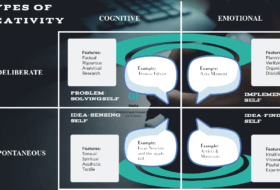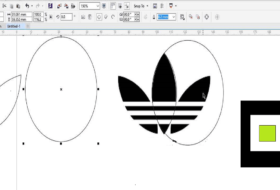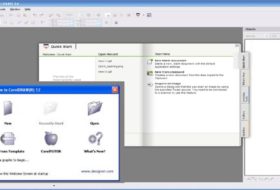Plagiarism is quite a common term that we hear frequently. Many of us know that it is the act of stealing published or non-published content and ideas of someone else. There are different forms of plagiarism that need to be avoided by writers and academicians.
Back in the old days, it wasn’t taken too seriously, and people used to escape easily with plagiarized publications and submissions. However, in the current era of technology, where everything is available at your fingertips, plagiarized content doesn’t go unnoticed. Whether it is for educational, marketing, or any other purpose plagiarized content can easily be identified.

Plagiarism is considered unethical, and people involved in it often have to endure severe consequences. Therefore, avoiding plagiarism at all costs is essential to avoid uncalled-for consequences.
Unfortunately, many people are held liable for plagiarism because they are unaware of its types and the method to avoid them. This lack of awareness often cost them their valuable career and, above all, reputations.
This article discusses a few common types of plagiarism and the effective method to avoid them. It will help writers and students greatly to avoid plagiarism.
Table of Contents
Different Forms of Plagiarism
Before we discuss how to avoid plagiarism, it is essential to understand the various types or forms of plagiarism. Once we know these types and how they occur, it will be easier to avoid them.
Let’s discuss in detail the different forms of plagiarism below:
Complete Plagiarism
Global plagiarism is termed complete plagiarism. Its alternative name says it all. This plagiarism occurs when you pass someone else’s work directly and attribute it to yourself. This type of plagiarism is performed deliberately. The plagiarizers often hire someone else to write the submission or publication for them and then pass it off as their work.
In some cases, plagiarizers also copy and paste someone else’s work available online or in the form of writing and pass it as their own. Regardless of the scenario, such plagiarism will be considered global or complete plagiarism.
Moreover, as this form of plagiarism is performed deliberately, the consequences for the person involved in this unethical act are severe such as expulsion, end of career, and failure.

Direct Plagiarism
It is also known as verbatim plagiarism. This form of plagiarism involves taking word-by-word content from a source and pasting it into your work. Some people may consider it similar to global plagiarism as it works similarly.
However, the key difference between verbatim and complete plagiarism is that verbatim plagiarism is the copy of a few paragraphs or sentences. In contrast, complete plagiarism involves passing on the entire content as yours.
As this form of plagiarism is also performed deliberately, it also carries the same consequences as global plagiarism. Changing or eradicating a few words doesn’t make the content plagiarism-free.
Content including verbatim plagiarism with a few modifications is still considered plagiarized, and the person involved in this practice faces the consequences.
Patchwork Plagiarism
Another type of plagiarism that is often hard to find is patchwork plagiarism. It is also known as patchwriting or mosaic plagiarism.
This form of plagiarism involves stitching words, sentences, and phrases from various sources and including them in your work. It generally occurs when you have different research sources open in front of you while writing.
Academic integrity and ethical practice for writing content demand you to cite sources for information that is not commonly known. Failure to do so will make you involved in mosaic or patchwork plagiarism.
This type of plagiarism can occur when you take significant time to write something and forget sources you have used to obtain information related to the topic.
Accidental Plagiarism
Accidental or non-intentional plagiarism can occur because of various reasons. A simple reason could be the reliance on a couple of sources for retrieval of relevant information to the topic.
Another reason could be the inability to properly cite sources from where you have taken the information.
Similarly, accidental plagiarism can occur when you unknowingly imitate someone else’s writing style.
Accidental or unintentional plagiarism can also occur when you have written too much on a single topic and unknowingly repeat the words you have already written in your previous submissions or publications.
However, the consequences of accidental plagiarism also remain the same. Therefore, it is necessary to avoid accidental plagiarism as well.
Point to note
Plagiarism, no matter the type remains unethical and should be completely avoided in academic works. To avoid plagiarism, simply acknowledge the content of others included in your work.
Moreover, you can completely avoid plagiarism by trying to identify possible plagiarized content in your work.
I remembered when the doctorate thesis of one of my friends who is a lecturer was rejected due to plagiarism. All I did to help him was to use the Turnitin plagiarism checker tool to identify the plagiarized content. Then, I either paraphrased the content or acknowledged the original owners of the content.

After due diligence at ensuring that all plagiarized content was eliminated to the tone of at least 15%, the thesis was approved.
You can also do the same, but how would you identify plagiarism in your works? Let’s quickly look at this in the next section.
How to Identify Plagiarism
We know plagiarism goes against academic integrity and is considered an unethical practice. Hence, avoiding it in your writing is a must.
You can avoid plagiarism manually by putting time and effort in your research and writing. Or use technology to detect possible plagiarized content in your research work and acknowledge them appropriately.
For example, deliberate plagiarism can be avoided by putting time and effort into the research and writing process. On the other hand, there are chances of accidental plagiarism.
Therefore, you need to keep an eye out for instances where plagiarism becomes a part of your work accidentally.
Using a plagiarism checker is the best way to determine such instances. A plagiarism detector with an AI-based algorithm and extensive database would help you find plagiarized patches in your work.
You just have to scan your content through a plagiarism tool to find plagiarized patches in your content. Doing so will help you determine duplication in your content and the sources with similar content.

Popular free and paid plagiarism detector tools include but are not limited to the following.
- Plagiarism Checker AI-based tool – Free and paid tool
- ZeroGPT – A free GPT-4 and ChatGPT content detector. Use this tool to identify contents mostly generated using AI/GPT.
- Check-Plagiarism – AI-based tool for teachers and students – Free and paid tool.
- Dupli Checker – Free and premium plagiarism detector tool.
- Plagiarism Detector – A free plagiarism checker tool for students, teachers, and the general public.
- Quillbot Plagiarism Checker – A famous premium plagiarism detector tool you may consider if you have the budget.
- Grammarly – One of the best tools for writers. The plagiarism checker will help you identify different forms of plagiarism.
- Scribbr – A premium plagiarism checker that combines the power and accuracy of Turnitin.
- Turnitin – One of the best plagiarism checker software for educational institutions and academicians. Its in-depth detection system makes it an ideal tool for professionals.
- Quetext – A free and paid tool commonly used by students, teachers and copywriters.
- Plagiarism Detector – This tool also offers a free and paid subscription to users.
Whichever tool you find suitable, whether free or paid, it will help you avoid plagiarism and academic theft.
How to Avoid Plagiarism
Global and direct plagiarism can be easily avoided by doing the research and writing work yourself. However, avoiding accidental plagiarism needs you to be aware of plagiarized patches.
The use of a plagiarism checker will help you become aware of such instances easily where your content appears to be similar to already published content.
Once you know these patches, you can source them properly or eradicate them to keep your work plagiarism-free. You should cite sources properly to avoid any source-based plagiarism. You can also paraphrase the content to eradicate duplication instances from the content and make it plagiarism-free.
Conclusion
Plagiarism is considered an unforgivable and unethical act in academic writing. Thus, you must ensure that the content you write, for professional or academic purposes, is free of plagiarism at all costs.
It is only possible when you know the common types of plagiarism and how to avoid them.
In this article, we have discussed a few common types of plagiarism and the method to avoid them.
I believe that this article will greatly help you to write plagiarism-free content. Haven said that I would love to know what you think about plagiarized content. Have you encountered such before or heard of one facing its consequences? Whatever it could be, kindly share your thoughts with us in the comment box below.




